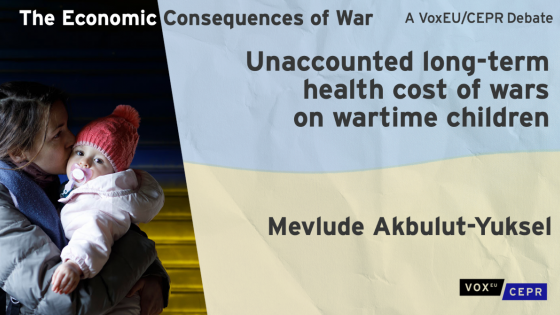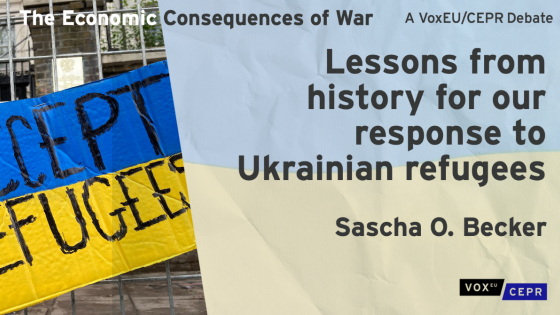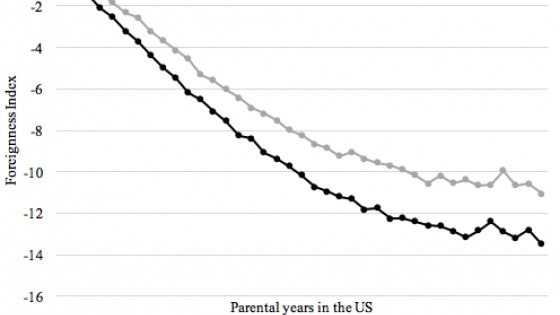Many Western countries have become multicultural societies, in which large shares of students in primary and secondary schools have a migration background and are not proficient in the local language. These students often perform worse than students speaking the local language, not only in schools but also on the labour market. This raises the question of how these students should be taught. Should they be allocated to classes with many other foreign-language speakers or even speakers of the same foreign language? Or should they be taught in mixed classes with many native-language speakers?
These questions have gained new attention since the recent Russian invasion of Ukraine and the subsequent wave of Ukrainian refugees – often mothers with school-age children – into other European countries. Should these children be taught in special integration classes? Or would it be better to integrate them into regular classes?
There is extensive literature analysing the effect of ethnic minority peers on short-term schooling outcomes of the general population. However, there is comparatively little work on the effects of ethnic minority peers on the schooling outcomes of ethnic minority students themselves, nor on their early career choices and possibilities (Entorf and Lauk 2008, Friesen and Krauth 2011, Jensen and Rasmussen 2011, Schneeweis 2015).
A priori, ethnic clusters in schools and elsewhere can have a variety of effects on ethnic minority students. First, ethnic clusters can slow down the rate at which foreign language-speaking students learn the local language (Danzer and Yaman 2016, Lazear 1999). Local language command directly affects their schooling and labour market outcomes (Dustmann 1994). Second, there may be cultural differences, e.g. regarding ambitions and the value accorded to academic education (Werfhorst and Tubergen 2007). Ethnic clusters can reinforce these culturally shaped values. Third, ethnic groups can serve as a network that provides students with better opportunities in the labour market (Beaman 2012, Bertrand et al. 2000, Edin et al. 2003).
Zooming in on ethnic clusters in Swiss schools and early career choices
In a new paper (Chuard et al. 2022), we investigate how the early career choices of foreign language-speaking students are shaped by these students’ exposure to foreign language-speaking peers. For this purpose, we use newly released longitudinal data on the universe of students in Switzerland during the transition from compulsory schooling to post-compulsory education. Switzerland offers an interesting setting for two reasons. First, there is comparatively early sorting into an academic or a vocational career track. This sorting takes place at the end of compulsory schooling in grade nine. Second, Switzerland is ethnically highly diverse and has a large fraction of foreign-born residents and students. Around one-quarter of the students speak a foreign language at home, with Albanian and Portuguese being the most spoken languages. As a result, we have more than 110,000 foreign language-speaking students in our final sample.
In our empirical analysis, we compare foreign language-speaking students of different cohorts within the same school and the same performance level. This very local comparison ensures that our results cannot be driven by, for example, differences in parental background, local labour markets, or performance levels determined at the end of primary education in grade six.
We find strong evidence that the early career choices of foreign language-speaking students depend on the share of foreign language-speaking peers. One single additional foreign language-speaking peer reduces the probability of proceeding to the academic career track by 0.2 percentage points and increases the probability of proceeding to the less prestigious vocational track by 0.2 percentage points.
We then disentangle the general effect of having peers who speak any foreign language from the specific effect of having peers who speak the same foreign language as the student herself. We find that having peers speaking the same foreign language is much more detrimental. The negative effect on proceeding to the academic track is twice as high. Even worse, this negative effect is not fully compensated by an increased probability of choosing vocational education. Instead, having more peers speaking the same foreign language increases the chances of not enrolling in any post-compulsory education.
Taking a more long-run perspective, we document that foreign language-speaking students with more foreign language-speaking peers are also more likely to choose vocational education (VET) programmes that generally lead to lower incomes later in life. This effect is rather modest but comes on top of the potential wage discrimination faced by members of ethnic minorities.
As discussed above, ethnic clustering in schools could impact the career choices and possibilities of foreign language-speaking students for a variety of reasons. We leverage variation in the arrival time and the socioeconomic status of migrant groups from different countries to disentangle negative language peer effects from positive peer ambition effects. We find evidence for both. Furthermore, in the Swiss context, connections to employers are relevant for VET programmes, which require students to find an apprenticeship position upon leaving compulsory school. We document that having more foreign language-speaking peers increases a student's probability of choosing an ‘ethnic-typical’ VET programme. This suggests that ethnic networks play an important role in career choice as well.
Insights on how to school ethnic minorities and Ukrainian refugees
High levels of residential segregation lead to an unequal distribution of ethnic minorities across and within Swiss municipalities. As a result, foreign language-speaking students have a much higher share of foreign language-speaking peers (41.9%) than the average student (25.9%). Our results suggest that this ethnic clustering in Swiss schools is harmful to foreign language-speaking students and partly responsible for the local-foreign gap in early career outcomes. For example, local language-speaking students are 50% more likely to proceed to the academic track than foreign language-speaking students. Our results suggest that one-tenth of this gap results from the difference in the share of foreign language-speaking peers. A straightforward policy implication of these findings is that school principals should aim at balancing ethnic compositions across classes. The potential of this policy, however, is limited if the ethnic composition is vastly different across schools because of high residential segregation. Hence, in Switzerland and other ethnically segregated countries, policymakers worried about the poor performance of foreign language-speaking students should consider relaxing the students’ obligation to attend schools where they live and maybe think about broader policies aimed at reducing segregation.
Even though our study does not include the many newly arrived Ukrainian children, we think it can offer some tentative insights on how to integrate the many Ukrainian children in schools. In particular, we have documented that the presence of clusters of students of a single foreign ethnicity tends to exacerbate the negative effects on early career outcomes. Together with earlier results discussed by Foged et al. (2021), our study suggests that the optimal policy may well be to quickly integrate Ukrainian children into regular classes and offer them some extra language training.
References
Beaman, L (2012), “Social networks and the dynamics of labour market outcomes: Evidence from refugees resettled in the US”, Review of Economic Studies 79(1): 128–161.
Bertrand, M, E Luttmer and S Mullainathan (2000), “Network effects and welfare cultures”, The Quarterly Journal of Economics 115(3): 1019–1055.
Chuard, C, A Aerne, S Balstera, B Eugser and R Hodler (2022), “Ethnic clustering in schools and early career outcomes”, CEPR Discussion Paper 17505.
Danzer, A and F Yaman (2016), “Ethnic concentration and language fluency of immigrants: Evidence from the guest-worker placement in Germany”, Journal of Economic Behavior & Organization 131: 151–165.
Dustmann, C (1994), “Speaking fluency, writing fluency and earnings of migrants”, Journal of Population Economics 7(2): 133–156.
Edin, P-A, P Fredriksson and O Åslund (2003), “Ethnic enclaves and the economic success of immigrants—evidence from a natural experiment”, The Quarterly Journal of Economics 118(1): 329–357.
Entorf, H and M Lauk (2008), “Peer effects, social multipliers and migrants at school: An international comparison”, Journal of Ethnic and Migration Studies 34(4): 633–654.
Foged, M, L Hasager and G Peri (2021), “Language training and refugees’ success’’, VoxEU.org, 20 March.
Friesen, J and B Krauth (2011), “Ethnic enclaves in the classroom”, Labour Economics 18(5): 656–663.
Jensen, P and A W Rasmussen (2011), “The effect of immigrant concentration in schools on native and immigrant children’s reading and math skills”, Economics of Education Review 30(6): 1503–1515.
Lazear, E (1999), “Culture and language”, Journal of Political Economy 107(S6): S95–S126.
Schneeweis, N (2015), “Immigrant concentration in schools: Consequences for native and migrant students”, Labour Economics 35: 63–76.
Werfhorst, H G van de and F van Tubergen (2007), “Ethnicity, schooling and merit in the Netherlands”, Ethnicities 7(3): 416–444.








